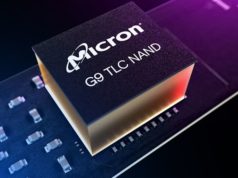The video game No Man’s Sky captured our hearts the moment its veil was lifted for one reason: seeming infinity, right now. A very sci-fi, virtual version, of course, but its abstract take is still something wild: more than 18 quintillion planets, all “magically” generated on the fly, for us to immediately fly toward, excavate, and marvel at.
It’s not flying cars or an auto-mutating vaccine that can cure all influenza or anything, but it still seems like some sort of sci-fi dream. The marriage of technology and infinity is the kind of thing you might not have ever expected to see, especially on current systems.
Still, No Man’s Sky doesn’t fully manage to scratch that basic human itch of the ever-exploring conquistador, nor does it help shed light on the reasons why our species always needs to go “over there.” To answer why No Man’s Sky fails, we can look at how it misses the target of human exceptionalism. The technology here is impressive, beautiful, and sometimes unforgettable. That tech’s basic template, however, sets a level of expectations that maybe no game could ever deliver—and that this one certainly doesn’t.
developer: Hello Games
Publisher: Sony (PlayStation 4), Hello Games (Windows PC)
Platform: PlayStation 4 (reviewed), Windows PC (tested)
ESRB Rating: E for Everyone
Release Date: August 9, 2016 (PS4), August 13, 2016 (Windows PC)
Price: $60
Links: Steam | Official website
If you come to this space-exploration game wanting nothing more than to lap up its ambitious planet-generation system, you’re in luck. No Man’s Sky is a Magic Eight Ball of visual possibility—one that you can shake up, turn around, and use to discover an amazing sci-fi vista every time you play. Whether soaring across planets in a ship, running past their mountains on foot, or blasting between star systems at hyperdrive speed, there’s literally always something new to see.
The game’s design process apparently began with a simple, brilliant realization by its creators: math plus programming could generate a seemingly infinite universe. Some of NMS‘s formulas define the shape and variation of mountains, caves, and other basic geometrical stuff. It’s all built with voxels rather than the kinds of polygons that form most hand-crafted in-game models, and the effect on the procedural terrain is striking throughout (in spite of some ugly textures and lousy close-up effects on the voxel elements).
Other formulas determine the types, colors, and designs of so many other objects on each planet. At their best, these creations vary in a lot of interesting ways. The variety peaks with grass, foliage, rock formations, and especially the creatures found on these planets. They fly, they skitter, they stomp, they slither, and they rarely look the same from one planet to the next. The allure of “Spore but with better random creature generation” will certainly satisfy some players as a technological feat alone. The game’s geometrical diversity ultimately more than makes up for some of the muddier-looking stuff.
So, then, the first promise of the game: Get on a spaceship, hop between thousands of procedurally generated planets, and see something wildly different wherever you go. People who have doubted NMS‘s gameplay potential have at least counted on this hope of a cool galaxy to loiter around. Two problems get in the way of this promise, however, and the first is in the rendering engine.
Let’s say you fix up your crash-landed spaceship—as the game’s first “mission” urges you to do in the game—and blast off with the sole purpose of sightseeing. Your typical flight path is a perfectly maintained altitude above the surface of a planet, as if you were working for Delta and had the smartest auto-pilot system in the world. You can never crash-land on the surface, and it’s very difficult to bounce off the side of a mountain, since the ship will automatically ascend or descend to keep you coasting. (You can also blast off away from any planet, at which point you have full piloting control in open space.)
No matter how quickly or slowly your ship is going, however, the game’s voxel-generation system cannot keep up. NMS‘s thousands of formulas crank out whatever you’re about to see at a given x-y-z coordinate, and whether you play on PlayStation 4 or a high-end Windows PC, the engine has been tuned the same way: to optimize performance, and therefore, to generate unfinished, blotchy, and semi-transparent objects as you fly. It just looks bad. Buildings, hills, caves, gemstones, flora, fauna, and other prominent features define the planets’ surfaces, and they all take too long to pop in. (Even some sort of fog or cloud effect to temporarily limit the visibility distance might be better than literally watching the world being created in front of you)
And in a world where most everything is a completely unique mathematical creation, the prebuilt, non-procedural content feels even more repetitive than usual. Pretty much every major “manmade” structure, meaning buildings and mystical relics, only comes a few models (with the exception of a few special building types that can appear later in the game). The galaxy only appears to have about 15 spaceship designs and one “home” for each of the alien races. There is only one type of outer-space depot and one structure for the “landing pads.” Even the entrances to caves carved into the planet’s surface are dotted with the same basic objects all too frequently. (At least the relics mix and match some pre-defined designs.)






